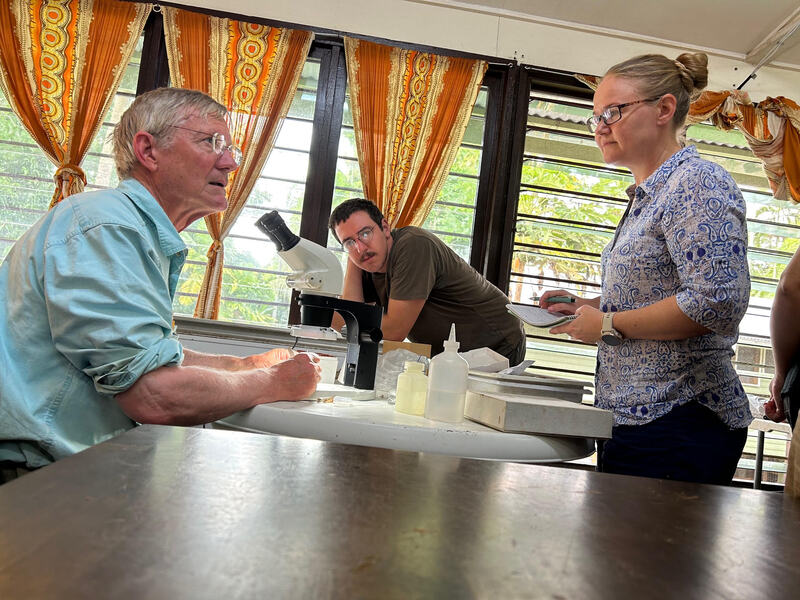AOTWP BLOG |
|
Day 3 we were back at the Binatang Research Center. The morning started with a demo by the instructors on how to mount an ant. Students then went back to their lab stations to try it themselves. Putting an ant on a pin is tedious and careful work, the students had to learn to relax themselves throughout the process in order to do it successfully.  Students took a pause from lab work to listen to a lecture by Michael Branstetter on Formicinae. Michael discussed the diversity and distribution of this subfamily and how it is 2nd largest sub-family of ants in the world. As it contains 3,244 known species that fall into 11 tribes. Students also learned that Papua New Guinea is known to have 355 species for this subfamily. Jack Longino also did a presentation on some of the subfamilies in the Formoicoid clade. Jack spent some time discussing his expertise on army ants too. Phil Ward presented soon after on the subfamily Myrmecinae and their very diverse nesting, feeding, and social behaviors. Students refer to these subfamily-related lectures throughout the course especially in the field, and for identification later. After some time committed to lab work, the instructors and students took a small field trip to a local tree known for having ant plants. We were guided by the BRC staff and locals through the village to a nearby beach. Students got the chance to climb the tree to see the ant plants for collecting purposes. Our night ended with part two to the student seminars. The students who presented were Josiah Kilburn, Juliet Turner, Arthur Matte, Vibhuti Bhat, Mael Dore, Joshua Spitz, Tristan Klaftenberger, and Emmeline van Roosmalen
0 Comments
Leave a Reply. |
AuthorWrite something about yourself. No need to be fancy, just an overview. Archives
September 2023
Categories |













 RSS Feed
RSS Feed